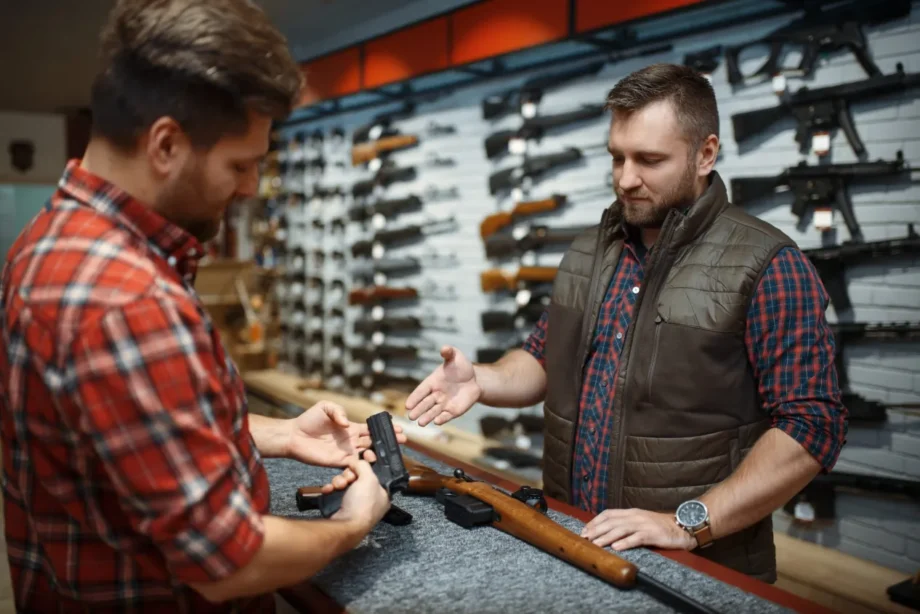


This is a very common question and the answer is a very personal one. I recommend a few things when embarking on your first firearm purchase.
For a Pistol –
First, find one that fits your hand. Comfort will be very important as you will be spending a lot of time with your newfound tool and exercise in the liberty and freedom of gun ownership that is hard to discover legally outside of America. I refer to the pistol comfort as the ‘handshake’. We’ve all had terrible handshakes varying from too soft and clammy, to a grip that only holds fingers.
A good handshake is immediately recognizable; find this handshake in your first pistol. You’ll only discover this by handling several options, each human hand is unique so spend some time holding many different pistol choices.
Secondly, look for a manual safety. This is part of the comfort of gun ownership and increasing your confidence level in handling the firearm through the many movements you will be conducting, including drawing from a holster and being around friends and family. The manual safety gives you that extra level of confidence until you’ve mastered the 4 rules of firearm safety.
- Weapon system is always loaded
- Always point in a safe direction
- Finger off the trigger until aimed at target
- Know your target and what is behind it
After you’ve achieved the proficiency and comfort in pistol use, try for a striker fired pistol without the manual safety (ex. Glock, Sig P320, Sig 365, FN, Heckler & Koch, etc.). The lack of a manual safety provides one less step when drawing a pistol and typically you can get shots on target quicker. There’s no accuracy benefit in not having the manual safety, solely in peace of mind that more than a deliberate trigger pull is needed to get the weapon system to fire the first round.

Third, chose you caliber. Some people will go straight to a .45 caliber or maybe even a 50 cal, because yeah, Hollywood makes it look cool and #stoppingpower. In reality, a .22 or a 9mm will be more economical and provide manageable recoil allowing you to hone in your shooting skills. Anyone who’s shot a 45 enjoys the feeling, but it can be tough shooting that caliber for an entire day training. 9mm will be easier on the hands and on the wallet.
Fourth – Iron sights. Do not go for the red dot, you need to master the art of aiming and understand sight picture, being front sight focused and how to train your eyes when aiming. Red dots are easy and can be great tools, but going straight to the red dot would be like giving a child a calculator and never teaching them arithmetic with pen and paper.
Pen and paper provides the foundation and understanding of the skillset; pen and paper can always be used when batteries die or equipment fails; same is true for optics.
For a Rifle –
If you skipped the Pistol section above, read it; same principle applies. I’d recommend a lever action .22 rifle or a automatic .22 rifle like the Ruger 10/22 – a proven weapon system for decades and the foundation for generations of young marksmanship.


This may not be a popular recommendation, but again as a new gun owner you need to focus on the fundamentals of marksmanship and safety. Once you have achieved confidence level and feel proficient with the weapon system, then move on to a higher caliber rifle; a bolt action rifle if looking to shoot at longer distances, or an AR style rifle that will allow many a myriad of optics and accessories.
Again, gun ownership is a very personal and unique experience. You can go straight for the hot rod weapon system if you think you’re ready for a modern and capable system, but not everyone is ready to jump into a sophisticated and advanced weapon right out of the gate. Just like many kids are not ready to have a Corvette as their first car, you should probably spend time focusing on fundamentals before getting into something that has way more capability than your skillset.

